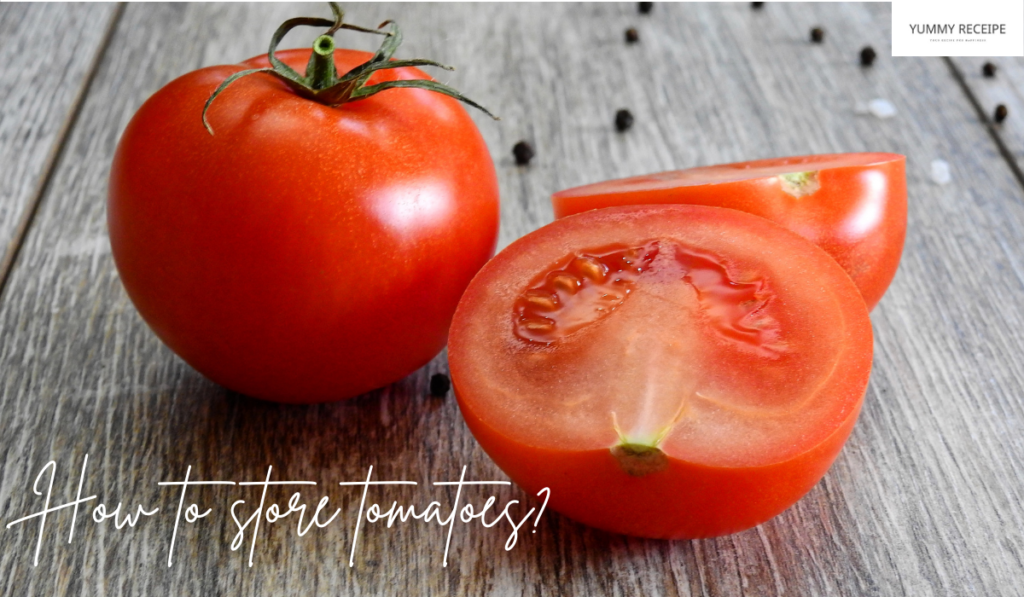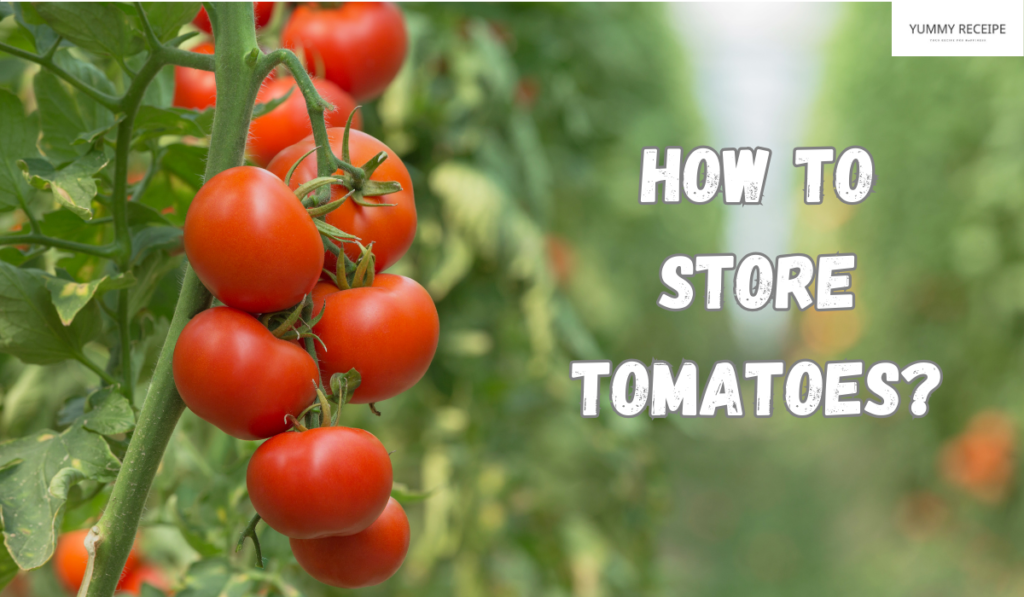Tomatoes are known for their versatility, rich flavor, and appealing color. However, improper storage can lead to quick spoilage, loss of flavor, and texture. Here’s how to store tomatoes the right way to maintain their freshness and make them ready for use whenever needed.
How to store tomatoes to keep them fresh?

Here are the most important tips for storing tomatoes properly:
- Fresh tomatoes are best stored at room temperature to allow them to continue their natural ripening process, which enhances their sweetness and aroma. Avoid refrigeration as it can damage the tomato’s cellular structure, making them mushy and reducing their flavor.
- Store tomatoes stem-side down at room temperature to minimize air exposure and slow spoilage. Use a well-ventilated container, such as a shallow bowl or basket lined with a paper towel.
- Avoid stacking tomatoes as this can cause bruising and accelerate spoilage. Keep them in a cool place away from direct sunlight, as excessive heat can cause over-ripening.
- Slightly ripe tomatoes can be left at room temperature to finish ripening. Arrange them in a single layer on a table, turning them regularly to ensure even ripening.
- Green tomatoes need time to ripen and can be encouraged by placing them in a brown paper bag with a banana or apple. These fruits release ethylene gas, which speeds up the ripening process. Alternatively, arrange the tomatoes in a single layer on a flat surface away from sunlight and check daily for ripeness.
- Fully ripe tomatoes should be consumed within a day or two if kept at room temperature. To extend their shelf life, refrigerate them in a single layer. Before using, bring them back to room temperature to recover some of their lost flavor.
- Avoid washing tomatoes before storage, as water accelerates mold growth. Wash them only before use, and check regularly to remove any spoiled tomatoes to prevent them from affecting the rest.
Some other tips to store tomatoes
Here are Some other tips to store tomatoes:
- To prevent overripe tomatoes from going bad, refrigerate them for up to three days. If the room temperature exceeds 29°C, refrigeration may be necessary to prevent rapid ripening.
- To refrigerate tomatoes, place them in the vegetable drawer of the fridge, where humidity is relatively high. Keep them in an open container to allow airflow. Avoid refrigerating green or partially ripe tomatoes, as refrigeration halts the ripening process.
- If you have a large quantity of tomatoes, you can freeze them for use in soups, sauces, and stews. Immerse whole tomatoes in boiling water for 30 seconds, transfer them to ice water, peel off the skins, and arrange the tomatoes in a single layer on a tray. Freeze them until solid, then transfer them to airtight freezer bags, removing as much air as possible. They can be stored this way for up to six months.
- You can also freeze tomato paste by blending tomatoes, pouring the puree into ice cube trays, and freezing them. Transfer the frozen cubes into freezer bags for easy use.
Benefits of tomatoes
Tomatoes offer numerous health benefits, making them an ideal addition to your diet:
- Tomatoes are great for the skin as they contain vitamins and elements that improve skin health and radiance. Lycopene protects the skin from UV damage, and vitamin C boosts collagen production, maintaining skin elasticity.
- They are rich in essential nutrients such as vitamin C, vitamin K, vitamin A, vitamin B6, potassium, magnesium, iron, and phosphorus.
- Tomatoes are high in dietary fiber, which aids digestion. They are also rich in antioxidants like lycopene, which help reduce bad cholesterol levels and increase good cholesterol, thereby reducing the risk of cardiovascular diseases.
- Packed with nutrients beneficial for eye health, such as vitamin A and beta-carotene, tomatoes help prevent night blindness and improve vision. Lutein and zeaxanthin reduce the risk of age-related eye diseases like macular degeneration and cataracts.
- The antioxidant compounds in tomatoes make them effective in fighting free radicals that damage cells. Lycopene reduces the risk of various cancers, including prostate, breast, lung, and colon cancers.
- Vitamin C in tomatoes strengthens the immune system by stimulating white blood cell production, combating infections and inflammation, and speeding up wound healing.
- Tomatoes are a good source of calcium and vitamin K, essential for bone health. Calcium improves bone density and prevents osteoporosis, while vitamin K aids blood clotting and strengthens bone structure.
- They contain anti-inflammatory compounds like carotenoids and flavonoids, making them effective in reducing joint pain, combating chronic inflammation, and improving health conditions like rheumatoid arthritis.
- Eating tomatoes can help regulate blood sugar levels due to their low glycemic index. Lycopene reduces oxidative stress associated with diabetes complications.
READ MORE
Recipes using tomatoes

Here are some delicious recipes you can prepare using tomatoes:
Stuffed tomatoes with rice and vegetables
Cut off the tops of the tomatoes and gently scoop out their insides. Mix rice with vegetables, oil, and spices, then stuff the tomatoes with the mixture. Arrange them on a baking tray and bake at 180°C for 20 minutes.
Tomato basil salad
Arrange tomato slices on a serving plate, layer fresh basil leaves on top, and drizzle with a mixture of olive oil, balsamic vinegar, salt, and pepper. Serve as a refreshing side dish.
Creamy tomato soup
Heat olive oil in a deep pot, add chopped onions and garlic, and sauté until soft. Add diced tomatoes and stir for five minutes. Pour in broth and let the mixture boil for 15 minutes. Blend until smooth, return to the pot, add cream, salt, and pepper, and serve hot with toasted bread.
Refreshing tomato juice
Blend tomatoes with water, add salt, pepper, and lemon juice, and strain the mixture using a fine sieve. Serve chilled.
By knowing how to store tomatoes, and following these storage tips, you can preserve the freshness and quality of your tomatoes for as long as possible, reduce waste, and enjoy delicious tomatoes in various recipes, whether roasted, in pasta, salads, or even pickled.





